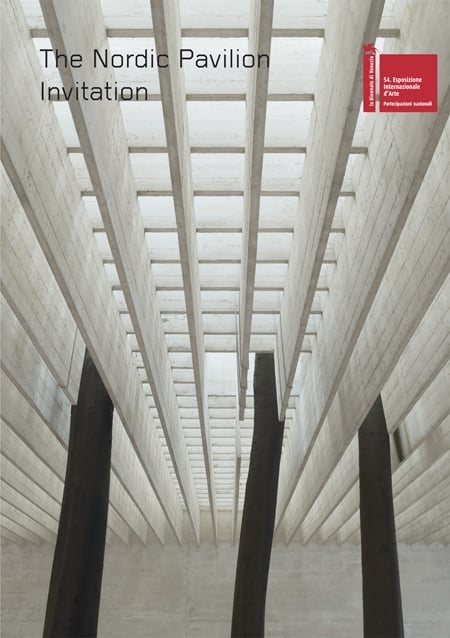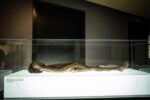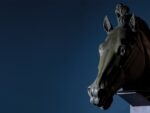Fia Backström / Andreas Eriksson

Fia Backström & Andreas Eriksson rappresenteranno la Svezia alla Biennale di Venezia, rispettivamente col progetto Borderless Bastards (multi-culti abc)
e Windows, Trees and Inbetween.
Comunicato stampa
Sweden presents Fia Backström & Andreas Eriksson
The Nordic Pavilion at the 54th International Art Exhibition – la Biennale di Venezia
Inivitation to the Press preview, Thursday 2 June, 11 am-1 pm, The Nordic Pavilion
Fia Backström and Andreas Eriksson are two of the most interesting and prominent Swedish artists of their generation. Both operate on a conceptual basis, while each engages in different methods and media, resulting in divergent projects. The works of both artists relate to Venice and the Biennale. Fia Backström’s work will be tied to the structure of national representation within la Biennale di Venezia. Andreas Eriksson's work relates to the Nordic Pavilion, which plays with the notion of indoors and outdoors, nature and architecture, with its two glass walls and trees growing indoors.
“These two distinct projects are not to be regarded as a group show in which the works comment on each other. Yet, if we look for correspondences, we could say that both projects engage in different ways directly with the context,” says curator Magnus af Petersens.
Fia Backström
Fia Backström’s (b.1970) work BORDERLESS BASTARDS (multi-culti abc) for the Nordic Pavilion is constructed from a series of conversations between the artist and a network of international cultural producers. The topics of these one-on-one conversations span across notions of national narratives, identity and iconography. Each participant has been asked to choose a public sculpture from the period of conception of the modern nation state, depicting a person rather than an archetypal hero.
Ten of the chosen sculptures have been reproduced digitally and printed onto metal cutouts. Backström has been bypassing organizational structures, by negotiating permission directly with artists representing Canada, Egypt, Sweden, Korea, Israel, Holland, Uruguay, England, Serbia, and Greece, to place her sculptures in close proximity to their national pavilions.
Audio guides, available at the Nordic Pavilion, accompany visitors as they walk through the Giardini. As a viewer approaches one of the statues, a soundtrack can be activated. The audio consists of the conversations, forming a multi-voice narrative. These guides create a connection between the sculptures and the social processes of networking, discussing, and decision making that underlie Backström’s piece.
BORDERLESS BASTARDS (multi-culti abc) unsettles traditional notions of nationhood and nationality by inquiring into past and possible models of collectivity, as in the temporary network, the grouping of rendered images and the direct exchange across the simulated geographical space of the Venice Biennale.
Andreas Eriksson
Several of the paintings Andreas Eriksson (b. 1975) has produced for the Nordic Pavilion are based on the renaissance notion of the canvas as a window. The paintings suggest nature seen through a window, with distortions and reflected light from an abstracted landscape.
The shadow paintings were made after photos of shadows cast by headlights of passing cars on an indoor wall of his house. Andreas Eriksson has depicted the shadows on a panel using a paint without binding agent before letting a car painter spray-paint them. The pigment without binding agent is dissolved and comes through to the surface of the top paint layer while it is still wet. The interplay between outside and inside in these paintings, where the panel represents the window between them, is also a reference to the architecture of the Nordic Pavilion.
The bronze sculptures are casts of birds that have died crashing into the artist’s studio window, deceived by the reflections in the glass panes. Like painters, they interpreted the flat surface as an opening into a three-dimensional space. Andreas Eriksson has also made casts of mole hills from his garden. The white plinths replicate the floorplan of his house, studio and the shed in the garden. In this way, the works in the Nordic Pavilion refer both to the place where they were created and the place where they are exhibited.
Curated by Magnus af Petersens, curator at the Moderna Museet
The exhibition is supported by The Barbro Osher Pro Suecia Foundation and Dataton.
Welcome to the press preview at the Nordic Pavilion at La Biennale di Venezia, thursday 2 June, 11 am–1 pm
For the press: RSVP by 28 May to [email protected]
Daniel Birnbaum, Director and Ann-Sofi Noring, Co-Director of the Moderna Museet will open the exhibitions in the presence of the curator and the artists.
For more information about the exhibitions at the Nordic Pavilion, please contact:
Kristin Ek, Press Officer
[email protected]
+46 8 519 552 81
or download material from www.modernamuseet.se/press
For biographies on the artists and curator, please visit:
Fia Backström
Andreas Eriksson
Magnus af Petersens
For images, please visit Moderna Museet Press >
The partnership between the three nations sharing the Nordic Pavilion in Venice - Sweden, Finland and Norway - will try a new concept for the next three biennials. The previous requirement that all three countries should be represented by artists will be set aside to enable solo exhibitions. Sweden, which is responsible for the Nordic Pavilion in 2011, will thus be presenting two separate projects.



